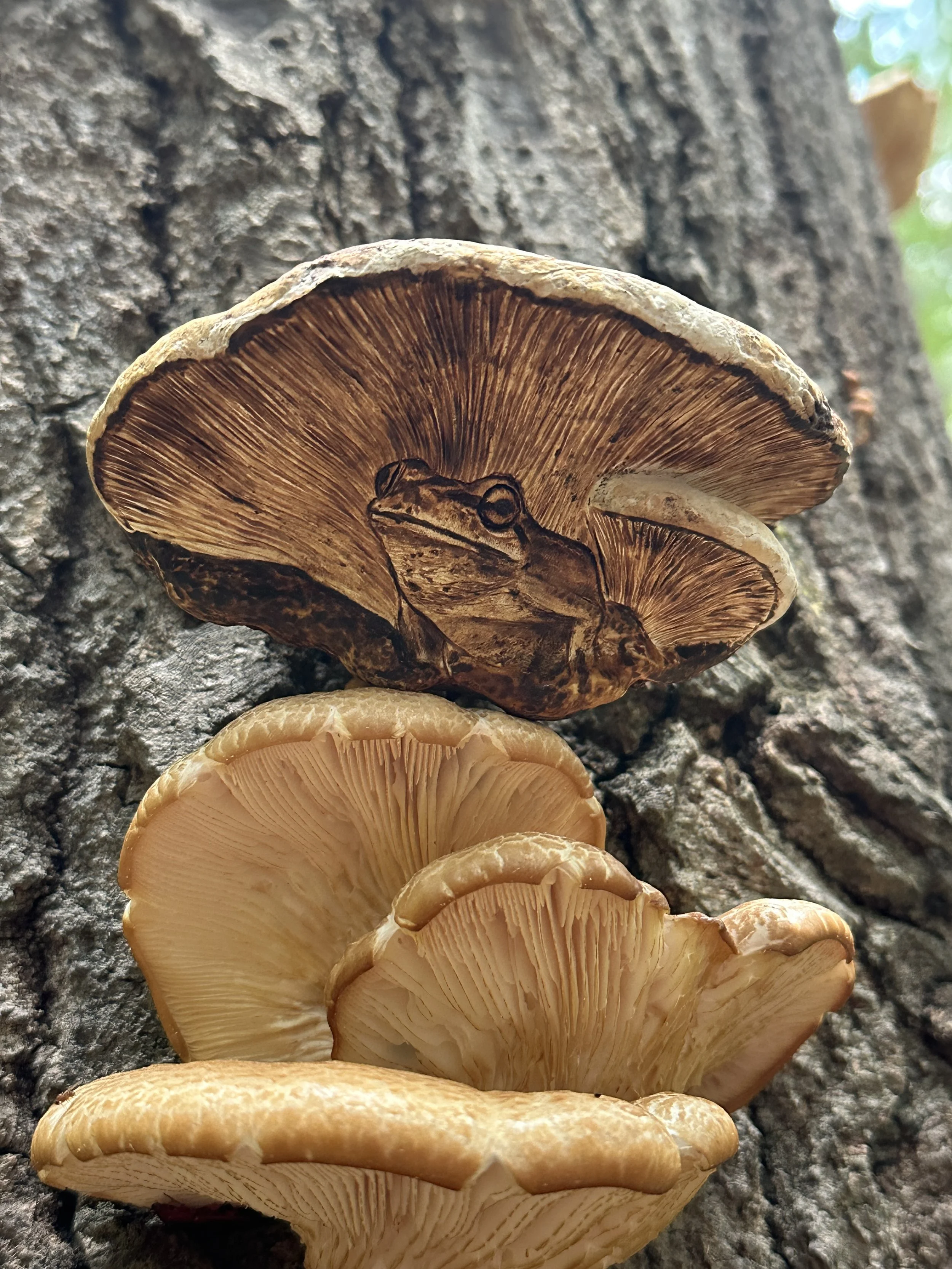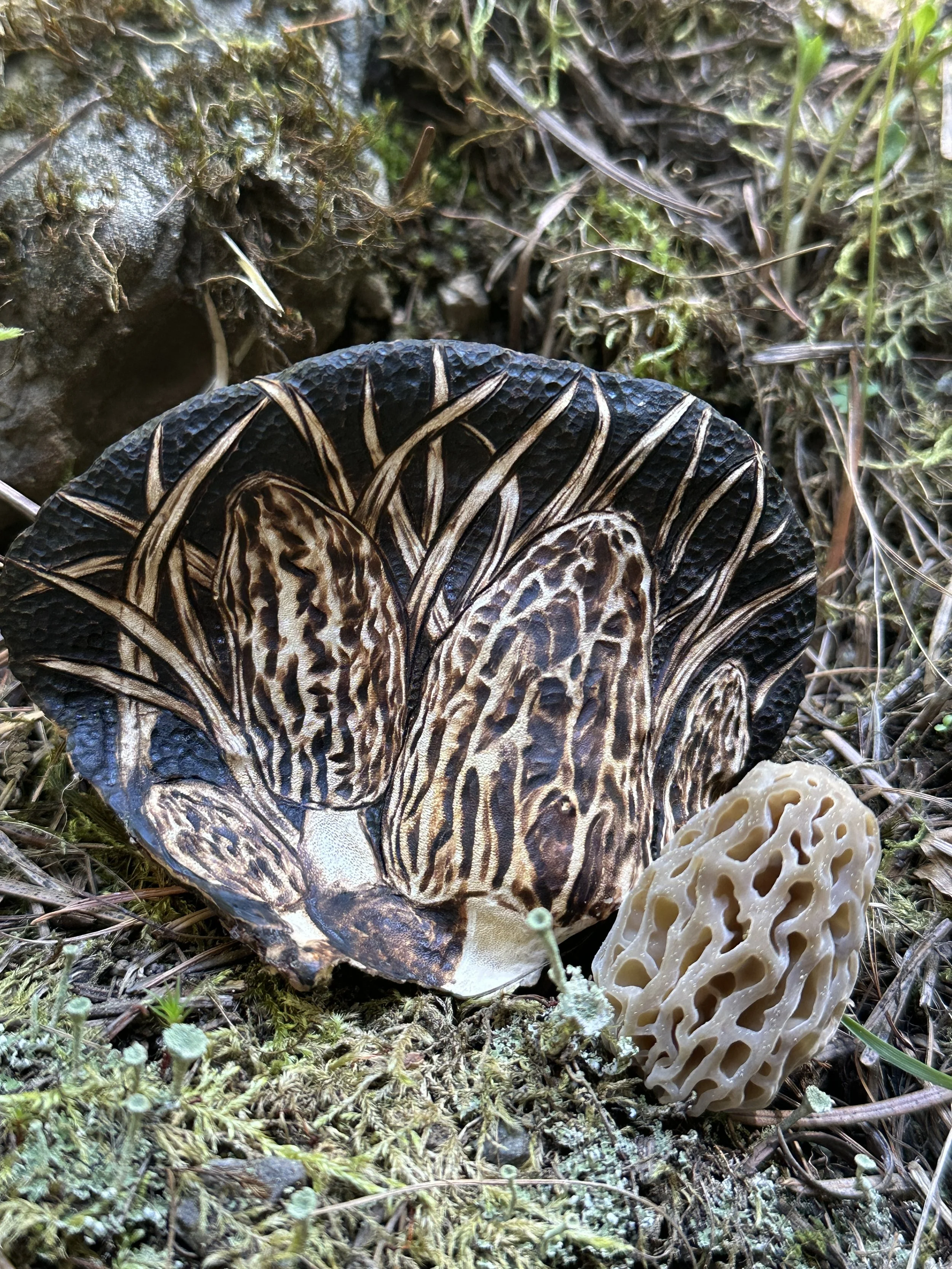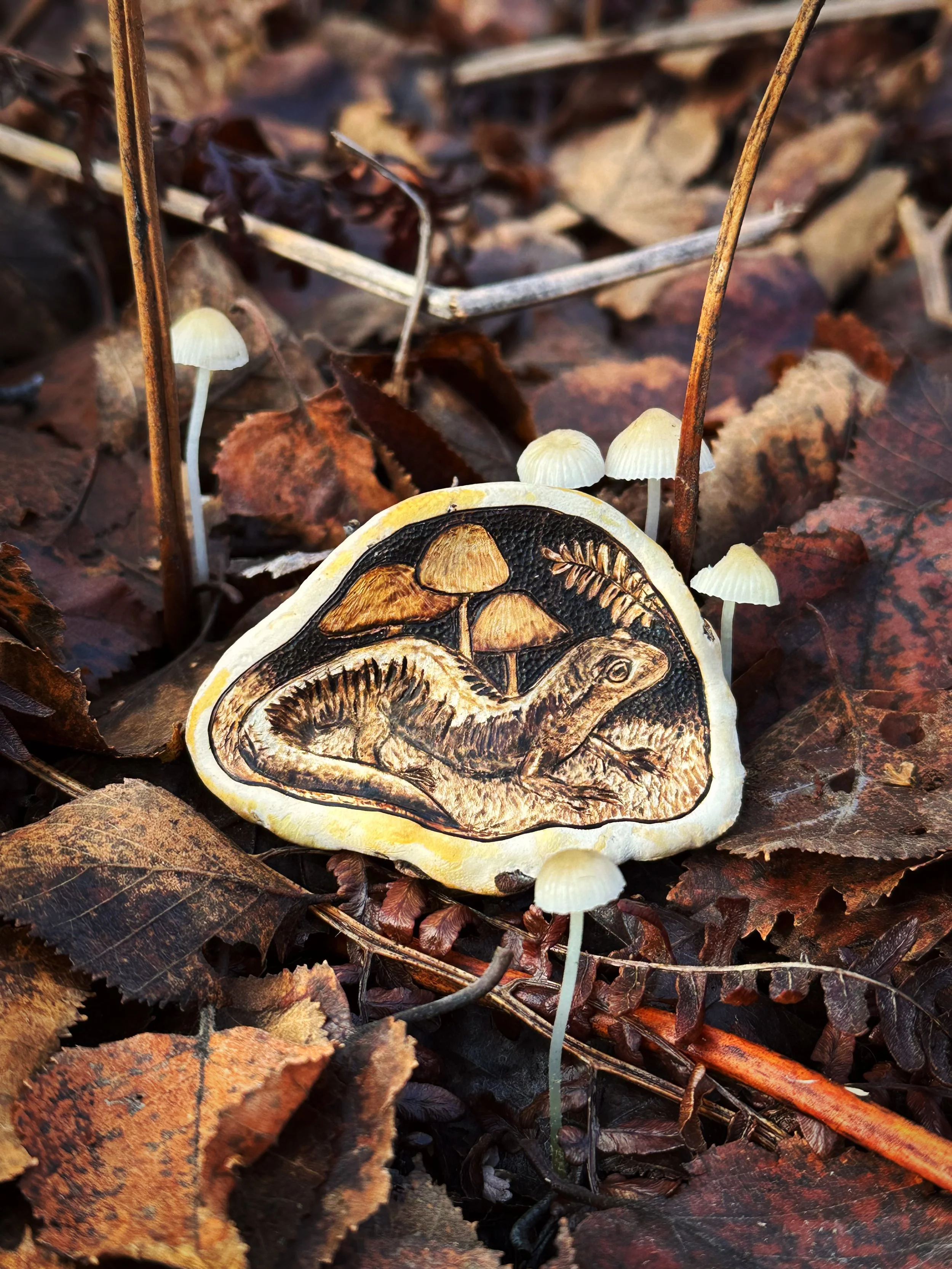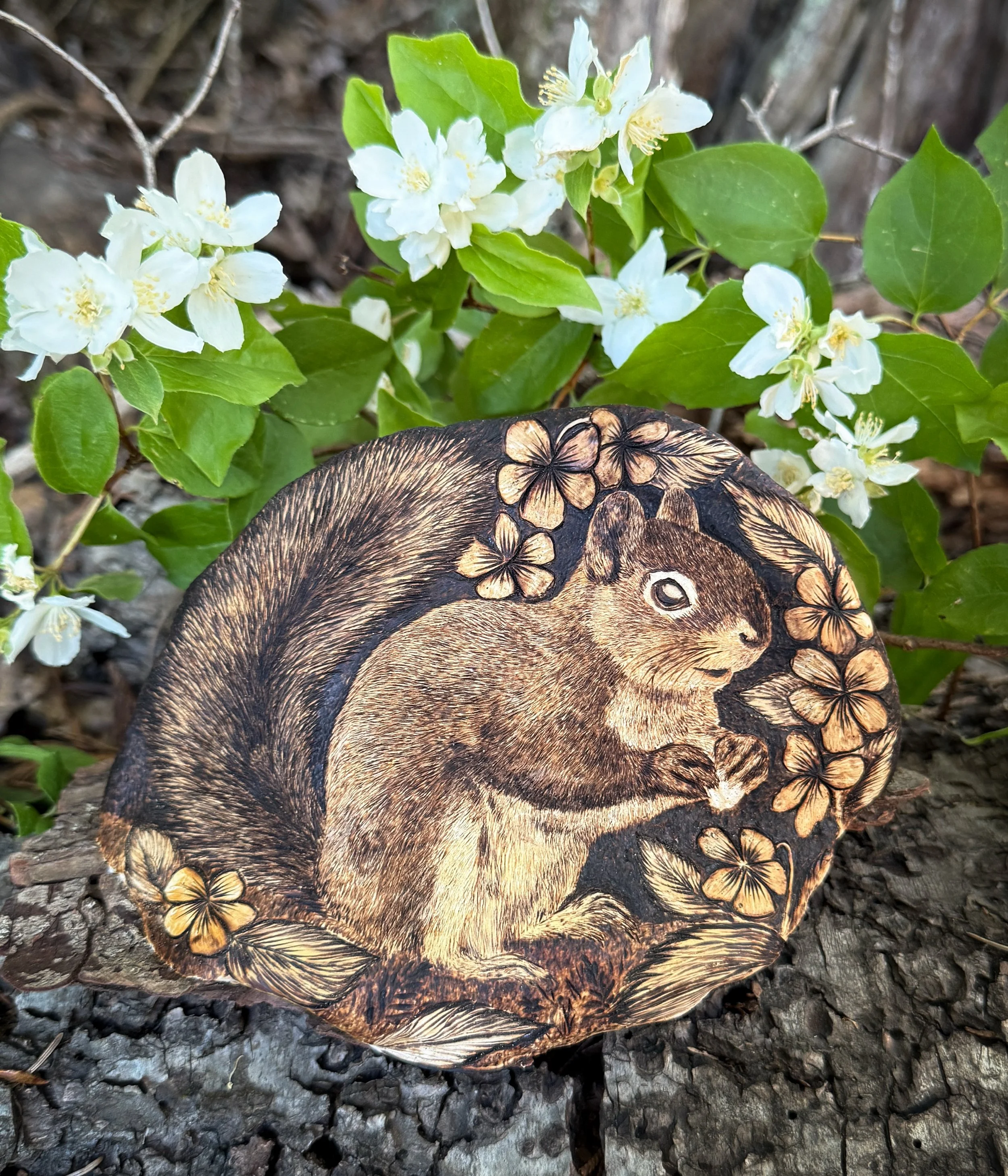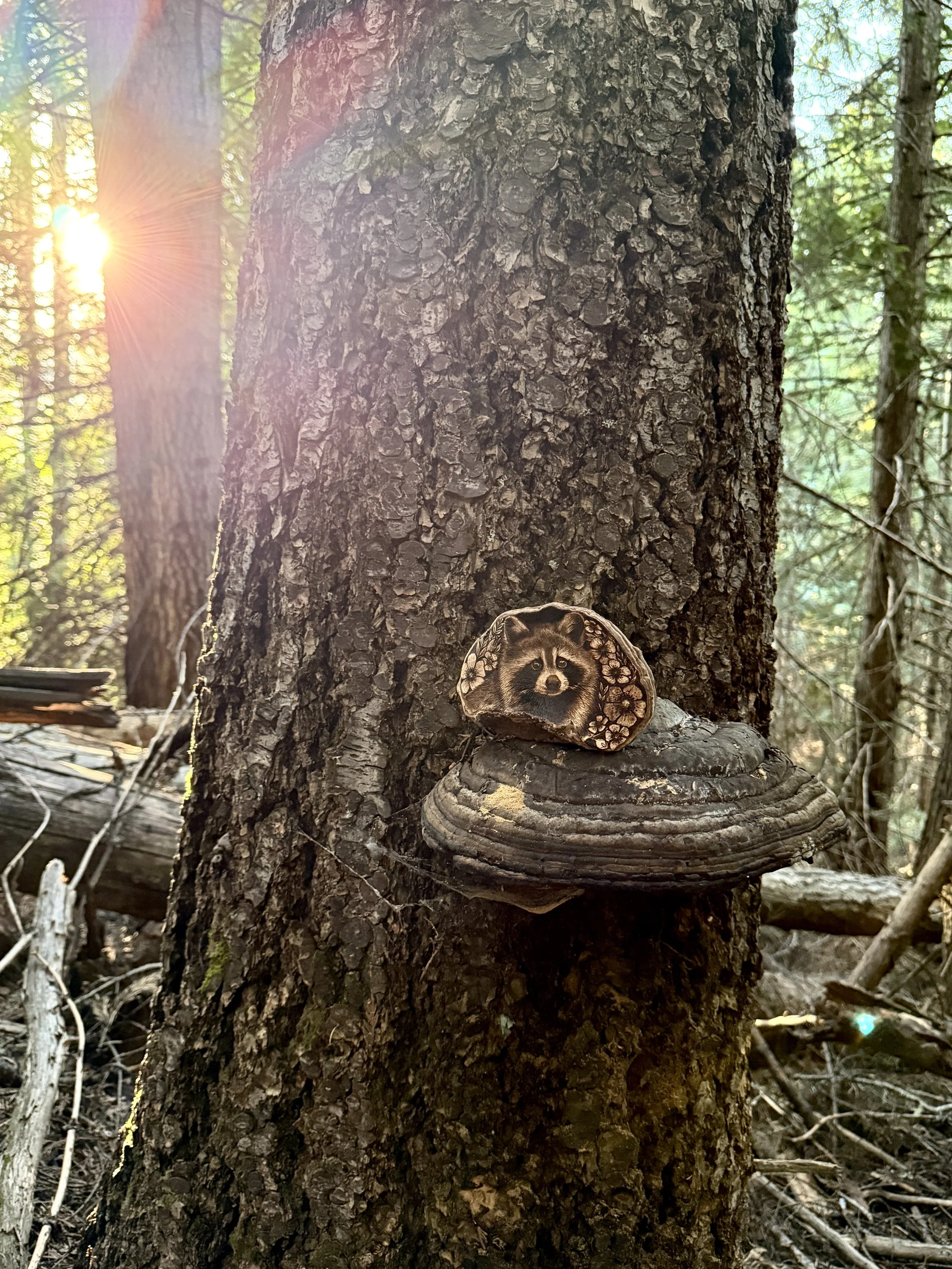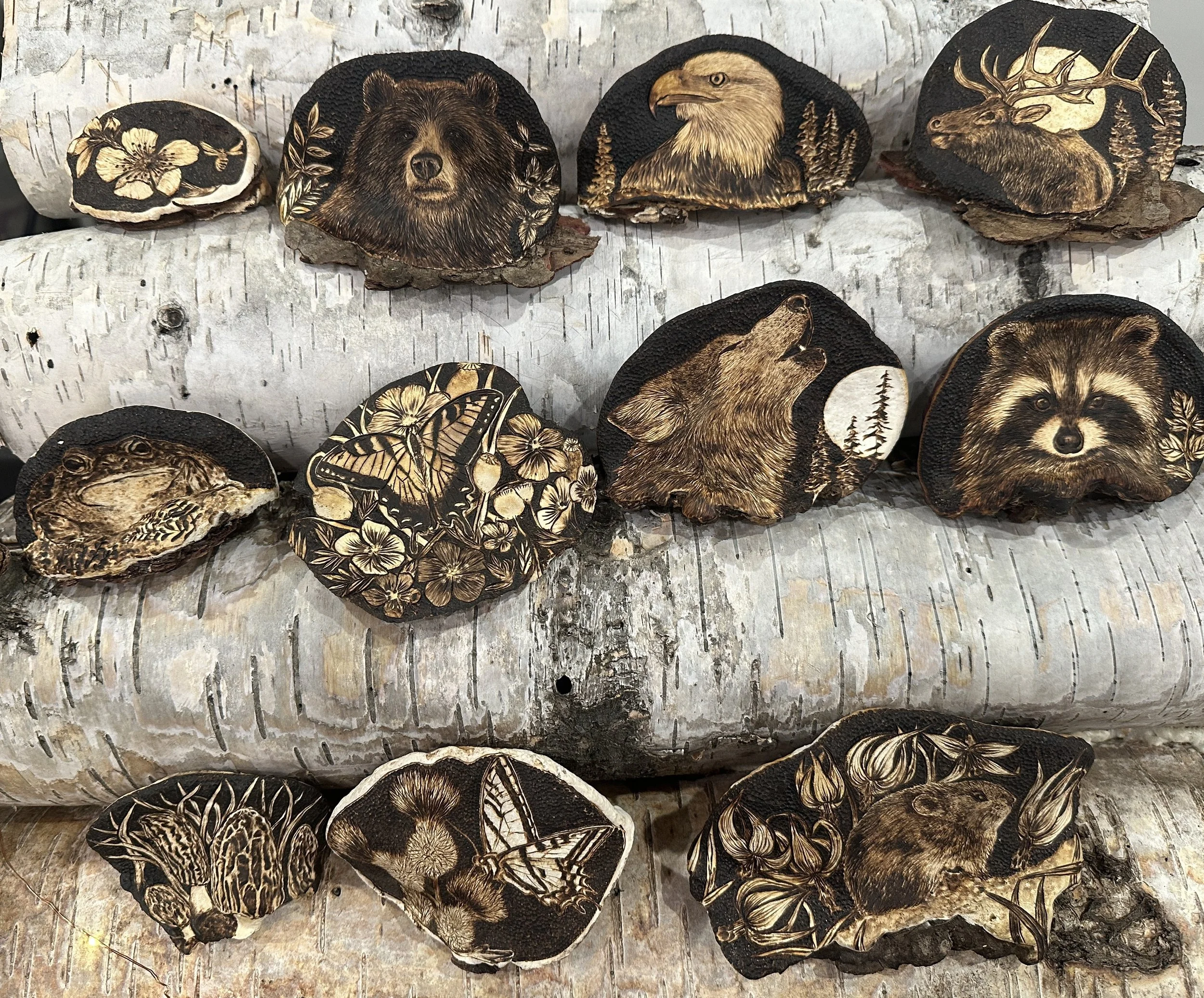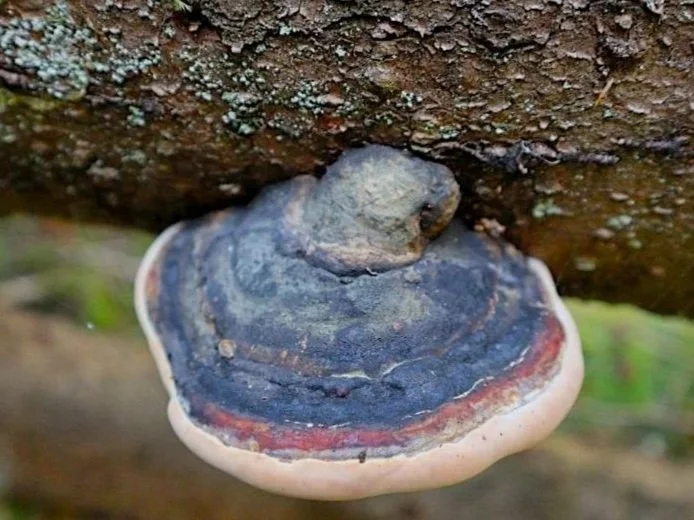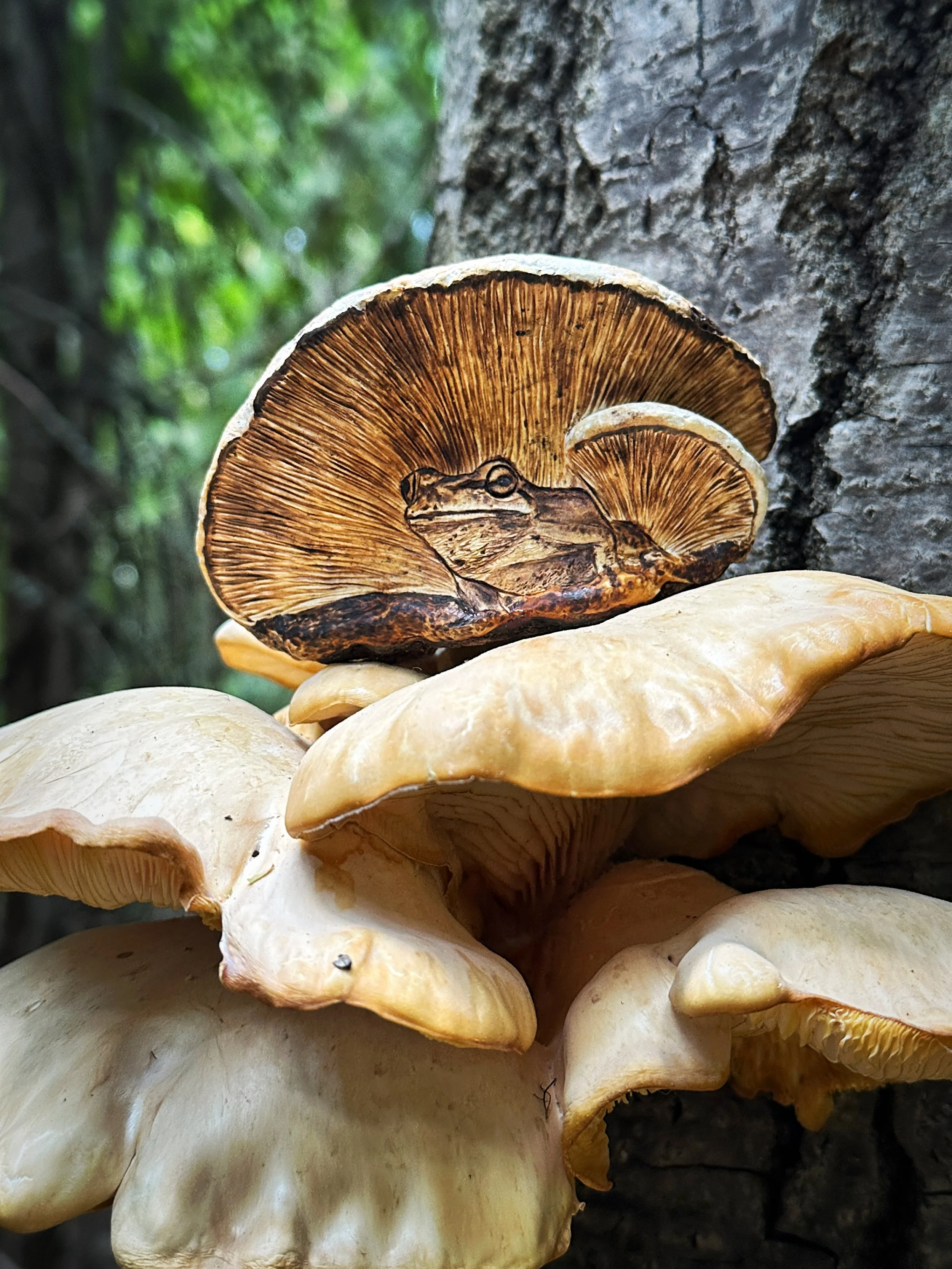
Kootenay
Conks
‘Spore’namental art’
Shelf Fungus-For your shelf
Hand Burned pyrography originals
on a Polypore Mushroom Canvas.
So how does it work?
Polypore mushrooms- also called ‘bracket’ or ‘shelf fungi’, are a group of fungi that form large bracket shaped Fruiting bodies called ‘conks’.
These polypores grow abundantly around Rossland, appearing on the decaying wood and trees that have fallen from wind storms and heavy winters. Large amounts of dead trees covering the forest floor create a huge risk of forest fires during the dry season, and so the brush must be managed and cut back. Conveniently a lot of residents in the Kootenay’s rely on wood stoves to heat their houses in the winters, and so these downed trees are utilized for firewood. All of these polypores that grow on the dead wood are usually just discarded or burned in slash piles as the wood is cut, as they have no medicinal or edible uses.
I would always collect the discarded conks, not wanting them to go to waste. When they dry they can last for decades on a shelf somewhere, and I wanted to see if I could find a purpose for all these conks, a way to use or celebrate them- and to my delight they make an excellent pyrography canvas.
Organic Art
The images are all burned onto the mushrooms surface by hand: one hair at a time, using my Razertip Sk pyrography machine. The mushrooms are a surprisingly versatile surface to work with, allowing me to carve in the different fur textures and finest of details. There’s no added chemicals, ingredients, or bi-products, and because they are completely natural and organic there’s zero waste involved- you could essentially just toss them back outside or on the compost pile without any environmental harm.
Harvesting the fruiting bodies does not affect or harm the overall fungus, which is extensively inter webbed throughout the trees and ground in a vast invisible connected network of ‘Mycelium’. All of my conks have been harvested sustainably- from areas that are undergoing active logging and deforestation.
The conks have been heated to a high internal temperature to sanitize and ensure they are completely dry.
Many species of polypore like turkey tail and reishi are used medicinally throughout the world, and some species like ‘Chicken of the woods’ are edible and a coveted ingredient among foragers. Theres a large variety of Polypores that grow here in the Kootenay’s, however the ones I prefer fto use are the “Red Belted Conks” or ‘Fomitopsis Pinicola’. This is a non-edible bracket fungus that mainly decomposes the trunks of trees- known as "brown crumbly rot", a term coined by foresters that reflect the type of damage that it does to the wood. This fungus is most common on dead trees, stumps or logs, but it can gain entry to living trees through wounds, holes bored by insects or dwarf mistletoe infections. Brown crumbly rot is one of the most damaging and frequently occurring wound parasites in old-growth forests in Canada. The presence of conks indicates extensive decay. Second-growth trees can also be infected, making them subject to breakage and windthrow.





